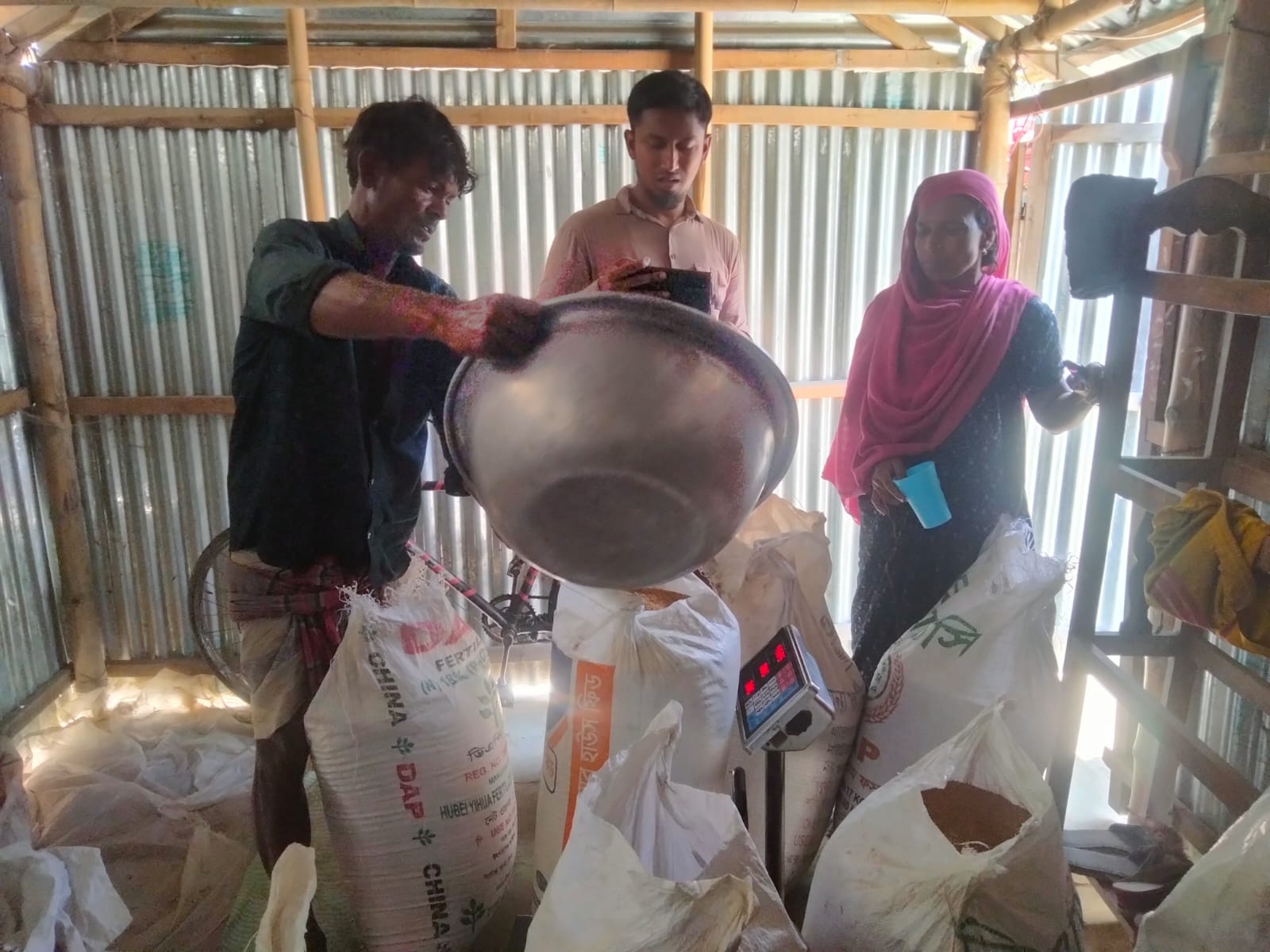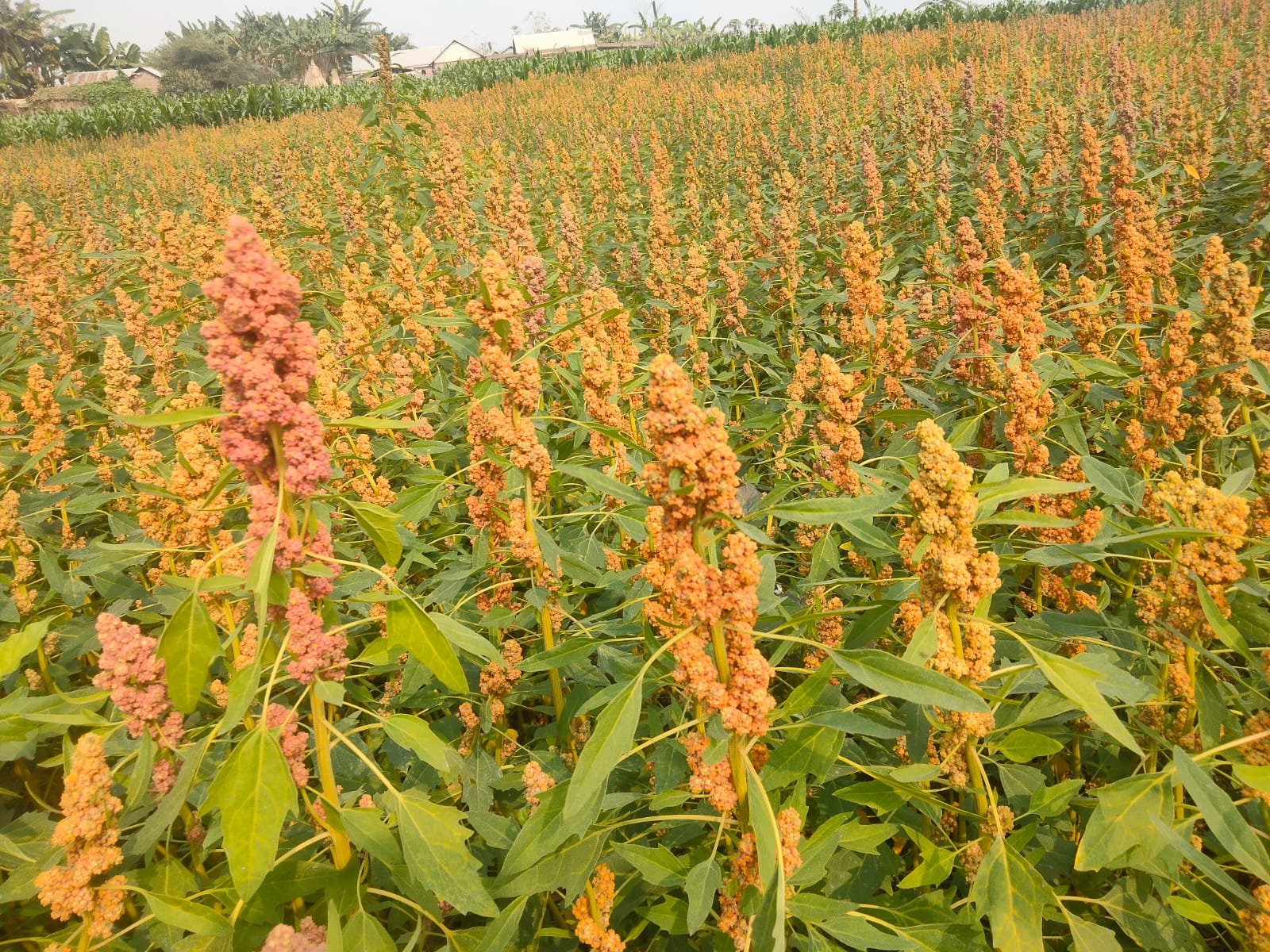Kurigram is a riverside district of North Bengal where river erosion and floods are common scenario. One of the larger river Brahmaputra flows through these districts. The main source of life and livelihood of this area is agriculture, cultivating various types of crops, fighting floods and surviving river erosion. Yet amidst the challenges, a glimmer of hope emerged through the Local Government Initiative on Climate Change (LoGIC) project.
LoGIC is working in many climate vulnerable districts from July 2017 to build resilience through local adaptation. They have been implementing solutions in total 10 unions of 03 upazilas in Kurigram District. Mohanganj Union of Char Rajibpur Upazila is one of them where the total number of beneficiaries is 431.
Driven by the vision to empower communities, LoGIC introduced a transformative climate adaptive solution: quinoa cultivation. Quinoa is a very ancient crop. More than 70 countries around the world are cultivating quinoa including Bangladesh. According to Professor Mr. Dr. Parimal Kanti Biswas, Shere Bangla Agricultural School, “Quinoa is a very beneficial food for diabetics, which contains 14-18 percent protein, calcium, iron, zinc, copper, phosphorus, potassium and manganese. He also said that quinoa can be cultivated in rabi season all over the country including drought and saline areas”.

With support from the Amal Foundation and initial investment of 08 kg of quinoa seeds distributed among a group of farmers consisting 7 members of Nayachar Climate and Livelihood Development Cooperative Society embraced this opportunity, seeing in quinoa not just a crop, but a lifeline. These farmers sowed the seeds in pilot basis in November, 2023 in the fertile lands of Mohanganj. Through meticulous care and determination of the farmers and with the project officials monitoring Quinoa begins to ripe and harvested in min March, 2024. Total 1127 Kg Quinoa has produced; average sales price was 140 taka per kg and the total revenue generated from quinoa was BDT 145,650 from total 320 Decimal land. With each harvest, the farmers reaped not only the fruits of their labor but also newfound hope for a sustainable future.

As quinoa is a short duration (90 days) crop, it allows farmers to cultivate additional crops at the same land which provides additional income for them. Most. Lovely Khatun, one of the farmers and beneficiaries said, “I am cultivating quinoa on 60 decimals of land and the yield is very good. If I had cultivated paddy or mustard onthis land, I would never have been able to earn so much. If I get the guarantee of sale, I will cultivate more in the future, inshallah”.
The success of the pilot-based quinoa cultivation in Kurigram by the LoGIC project not only brought tangible benefits but also renewed hope and optimism to the farmers. This success story serves as an inspiration, showcasing the potential for communities to thrive in the face of adversity through sustainable practices and collective action for the future.